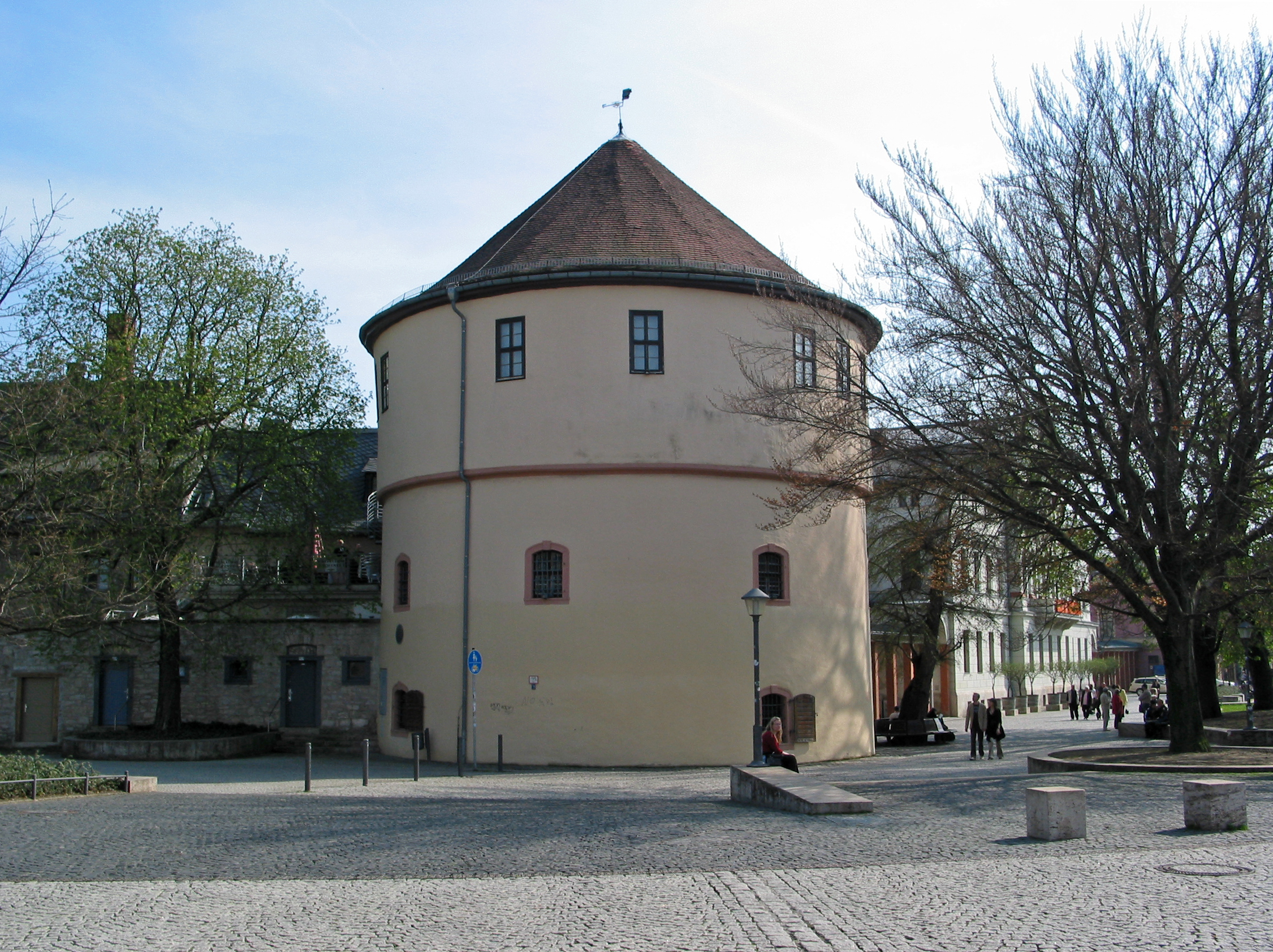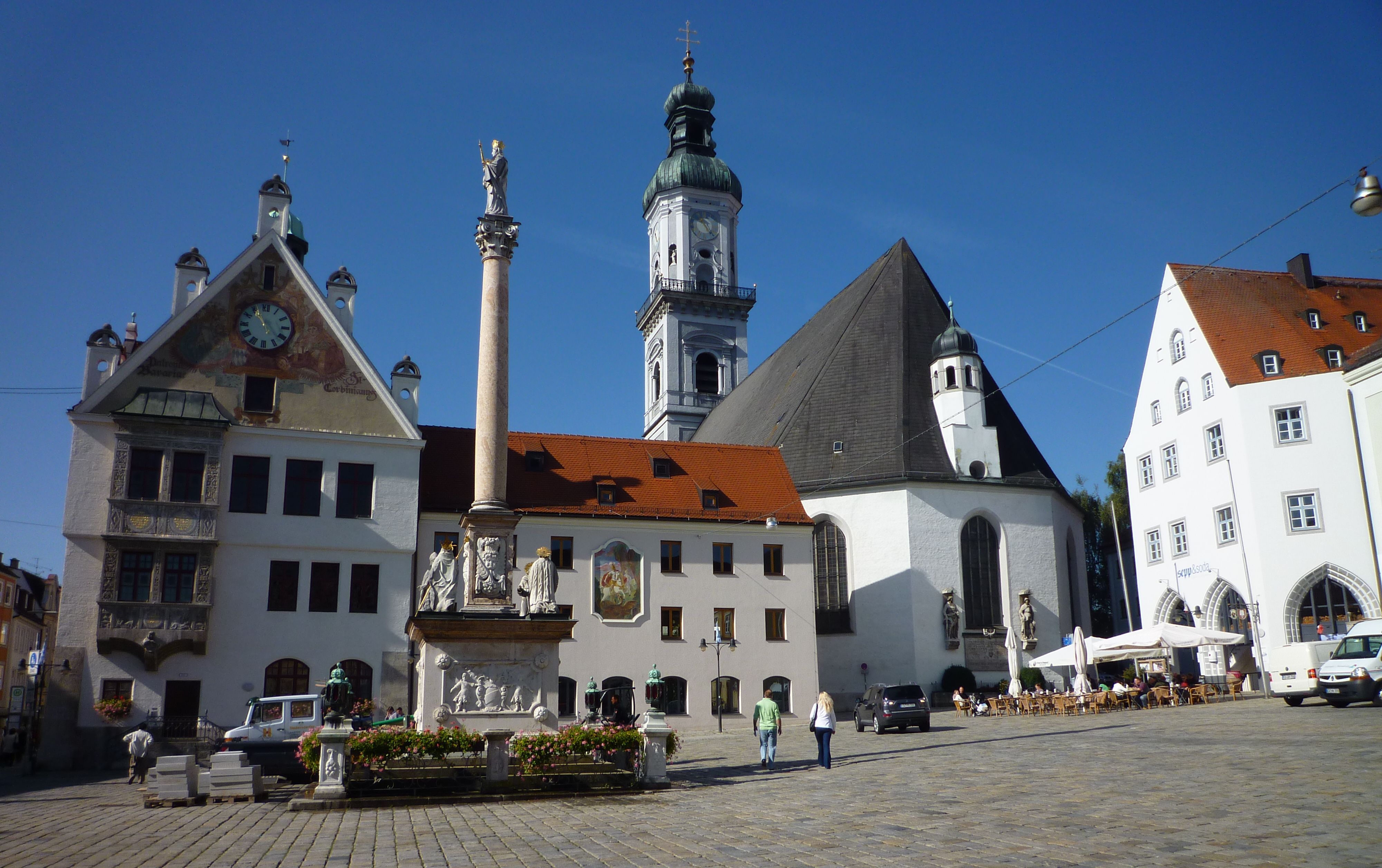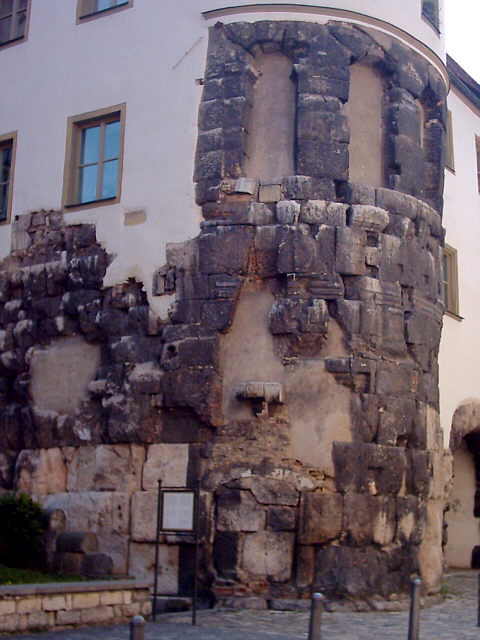|
Ulric I Of Carniola
Ulric I (), also ''Odalric'' or ''Udalrich'' (died 6 March 1070), Count of Weimar- Orlamünde, was margrave of Carniola from 1045 and of Istria from 1060 to his death. Life Ulric was the son of Margrave Poppo I of Carniola and Hadamut, daughter of Count Werigand of Friuli and Istria. He succeeded his father upon his death before 1044. Ulric married Sophia, the daughter of King Béla I of Hungary and his first wife, Richeza, sister of the Polish duke Casimir I the Restorer. Alternatively, it has been suggested that she was the daughter of Béla and his second wife, Tuta of Formbach, and thereby a sister of King Ladislaus I of Hungary. Another alternative hypothesis makes her the daughter of Tuta and King Peter of Hungary, but that seems highly unlikely. Sophia had been betrothed to Margrave William of Meissen, but upon his early death in 1062 married his nephew Ulric instead. She gave her first husband four children: * Poppo II (d. 1098), his successor as Margrave of Carniol ... [...More Info...] [...Related Items...] OR: [Wikipedia] [Google] [Baidu] |
Weimar
Weimar is a city in the state (Germany), German state of Thuringia, in Central Germany (cultural area), Central Germany between Erfurt to the west and Jena to the east, southwest of Leipzig, north of Nuremberg and west of Dresden. Together with the neighbouring cities of Erfurt and Jena, it forms the central metropolitan area of Thuringia, with approximately 500,000 inhabitants. The city itself has a population of 65,000. Weimar is well known because of its cultural heritage and importance in German history. The city was a focal point of the German Enlightenment and home of the leading literary figures of Weimar Classicism, Johann Wolfgang von Goethe and Friedrich Schiller. In the 19th century, composers such as Franz Liszt made Weimar a music centre. Later, artists and architects including Henry van de Velde, Wassily Kandinsky, Paul Klee, Lyonel Feininger, and Walter Gropius came to the city and founded the Bauhaus movement, the most important German design school of the int ... [...More Info...] [...Related Items...] OR: [Wikipedia] [Google] [Baidu] |
Ulric II Of Carniola
Ulric II (also ''Ulrich'', ''Odalric'', ''Oudalricus'', ''Udalrich'') (died 13 May 1112) was the Margrave of Istria from 1098 until circa 1107 and Carniola Carniola ( ; ; ; ) is a historical region that comprised parts of present-day Slovenia. Although as a whole it does not exist anymore, Slovenes living within the former borders of the region still tend to identify with its traditional parts Upp ... from 1098 until his death. He was the second son of Ulric I and Sophia, a daughter of Bela I of Hungary. Ulric was created Count of Weimar when still a child in 1067. He inherited both of his father's marches on the death of his brother Poppo II in 1098, but was divested of Istria sometime between 1101 and 1107, when it went to Engelbert II of Sponheim, whose father had preceded Ulric's brother in the march. Ulric was described as ''de Saxonie principus''. He married Adelaide (died 1146), daughter of Louis II, Count of Thuringia, but left no children. His sister Adelaid ... [...More Info...] [...Related Items...] OR: [Wikipedia] [Google] [Baidu] |
Patriarchate Of Aquileia
The Patriarchate of Aquileia was an episcopal see and ecclesiastical province in northeastern Italy, originally centered in the ancient city of Aquileia, situated near the northern coast of the Adriatic Sea. It emerged in the 4th century as a metropolitan province, with jurisdiction over the Italian region of Venetia et Histria. In the second half of the 6th century, metropolitan bishops of Aquileia started to use the patriarchal title. Their residence was moved to Grado, Friuli-Venezia Giulia, Grado in 568, after the Lombard conquest of Aquileia. In 606, an internal schism occurred, and since that time there were two rival lines of Aquileian patriarchs: one in Patriarch of Grado, New Aquileia (Grado) with jurisdiction over the Byzantine-controlled coastal regions, and the other in Patriarchate of Old Aquileia, Old Aquileia (later moved to Cormons). The first line (Grado) continued until 1451, while the second line (Cormons, later Cividale del Friuli, Cividale, and then Udine) co ... [...More Info...] [...Related Items...] OR: [Wikipedia] [Google] [Baidu] |
Rijeka
Rijeka (; Fiume ([ˈfjuːme]) in Italian and in Fiuman dialect, Fiuman Venetian) is the principal seaport and the List of cities and towns in Croatia, third-largest city in Croatia. It is located in Primorje-Gorski Kotar County on Kvarner Bay, an inlet of the Adriatic Sea and in 2021 had a population of 107,964 inhabitants. Historically, because of its strategic position and Port of Rijeka, its excellent deep-water port, the city was fiercely contested, especially between the Holy Roman Empire, Venice, Italy and Yugoslavia, changing rulers and demographics many times over centuries. According to the Demographics of Croatia, 2011 census data, 85% of its citizens are Croats, along with small numbers of Serbs of Croatia, Serbs, Bosniaks of Croatia, Bosniaks and Italians of Croatia, Italians. Rijeka is the main city and county seat of the Primorje-Gorski Kotar County. The city's economy largely depends on shipbuilding (shipyards "3. Maj" and "Viktor Lenac Shipyard") and maritime ... [...More Info...] [...Related Items...] OR: [Wikipedia] [Google] [Baidu] |
Kingdom Of Hungary (1000–1301)
The high medieval Kingdom of Hungary was a regional power in central Europe. It came into existence in Central Europe when Stephen I of Hungary, Stephen I, Grand Prince of the Hungarians, was crowned King of Hungary, king in 1000 or 1001. He reinforced central authority and forced his subjects to accept Christianity. Although all written sources emphasize only the role played by Germans, German and Italians, Italian knights and clerics in the process, a significant part of the Hungarian language, Hungarian vocabulary for agriculture, religion was taken from Slavic languages. Civil wars and pagan uprisings, along with attempts by the Holy Roman emperors to expand their authority over Kingdom of Hungary, Hungary, jeopardized the new monarchy. The monarchy stabilized during the reigns of Ladislaus I of Hungary, Ladislaus I (1077–1095) and Coloman I of Hungary, Coloman (1095–1116). These rulers occupied Croatia and Dalmatia with the support of a part of the local population. Bot ... [...More Info...] [...Related Items...] OR: [Wikipedia] [Google] [Baidu] |
Salian Dynasty
The Salian dynasty or Salic dynasty () was a dynasty in the High Middle Ages. The dynasty provided four kings of Germany (1024–1125), all of whom went on to be crowned Holy Roman emperors (1027–1125). After the death of the last Ottonian emperor in 1024, the Kingdom of Germany and later the entire Holy Roman Empire passed to Conrad II, a Salian. He was followed by three more Salian rulers: Henry III, Henry IV, and Henry V. They established their monarchy as a major European power. The Salian dynasty developed a permanent administrative system based on a class of public officials answerable to the crown. Origins and name Modern historians suppose that the Salians descended from the Widonids, a prominent noble kindred emerging in the 7th century. Their estates were located at the confluence of rivers Moselle and Saar and they supported the Carolingians. The Widonids' eastward expansion towards the river Rhine started after they founded Hornbach Abbey in th ... [...More Info...] [...Related Items...] OR: [Wikipedia] [Google] [Baidu] |
Freising
Freising () is a university town in Bavaria, Germany, and the capital of the Freising (district), with a population of about 50,000. Location Freising is the oldest town between Regensburg and Bolzano, and is located on the Isar river in Upper Bavaria, north of Munich and near the Munich International Airport. The city is built on and around two prominent hills: the Cathedral Hill with the former Bishop's Residence and Freising Cathedral, and Weihenstephan Hill with the former Weihenstephan Abbey, containing the oldest working brewery in the world. It was also the location of the first recorded tornado in Europe. The city is 448 meters above sea level. Cultural significance Freising is one of the oldest settlements in Bavaria, becoming a major religious centre in the early Middle Ages. It is the centre of an important diocese. Some important historical documents were created between 900 and 1200 in its monastery: * Freising manuscripts written in Slovenian, being th ... [...More Info...] [...Related Items...] OR: [Wikipedia] [Google] [Baidu] |
Henry IV, Holy Roman Emperor
Henry IV (; 11 November 1050 – 7 August 1106) was Holy Roman Emperor from 1084 to 1105, King of Germany from 1054 to 1105, King of Italy and List of kings of Burgundy, Burgundy from 1056 to 1105, and Duke of Bavaria from 1052 to 1054. He was the son of Henry III, Holy Roman Emperor—the second monarch of the Salian dynasty—and Agnes of Poitou. After his father's death on 5 October 1056, Henry was placed under his mother's guardianship. She made grants to German aristocrats to secure their support. Unlike her late husband, she could not control the election of the popes, thus the idea of the Libertas ecclesiae, "liberty of the Church" strengthened during her rule. Taking advantage of her weakness, Archbishop Anno II of Cologne kidnapped Henry in April 1062. He administered Germany until Henry came of age in 1065. Henry endeavoured to recover the royal estates that had been lost during his minority. He employed low-ranking officials to carry out his new policies, causing disco ... [...More Info...] [...Related Items...] OR: [Wikipedia] [Google] [Baidu] |
Lurnfeld
Lurnfeld is a market town in the district of Spittal an der Drau in the Austrian state of Carinthia. The municipality consists of the two Katastralgemeinden: Möllbrücke and Pusarnitz, comprising several small villages. It is located within the eponymous valley of the Drava river, on the southern slope of the Ankogel Group of the Hohe Tauern range, west of the district's capital Spittal an der Drau. At Möllbrücke is the confluence of the Drava with the Möll tributary. In the west the valley is confined by the mountains of the Kreuzeck group and in the south by the Gailtal Alps. History The Lurnfeld valley around the Roman city of Teurnia is a very old settlement area, in ancient times called ''vallis Lurna''. In an 891 deed mentioned as ''Liburnia'', it became the centre of the Upper Carinthian counts in the mediæval Lurn'' gau'', who resided at Hohenburg Castle. Their dominions then stretched from west of Villach up the Drava to Lienz and the Tyrolean border. Pusar ... [...More Info...] [...Related Items...] OR: [Wikipedia] [Google] [Baidu] |
Regensburg
Regensburg (historically known in English as Ratisbon) is a city in eastern Bavaria, at the confluence of the rivers Danube, Naab and Regen (river), Regen, Danube's northernmost point. It is the capital of the Upper Palatinate subregion of the state. With more than 150,000 inhabitants, Regensburg is the List of cities in Bavaria by population, fourth-largest city in the State of Bavaria after Munich, Nuremberg and Augsburg and the eighth-largest of all List of cities and towns on the river Danube, cities on the river Danube. From its foundation as an imperial Roman river fort, the city has been the political, economic and cultural centre of the surrounding region. Later, under the rule of the Holy Roman Empire, it housed the Perpetual Diet of Regensburg. The medieval centre of the city was made a UNESCO World Heritage Site in 2006 because of its well-preserved architecture, being the biggest medieval city site north of the Alps, and the city's historical importance for assembli ... [...More Info...] [...Related Items...] OR: [Wikipedia] [Google] [Baidu] |
Vogt
An , sometimes simply advocate, (German, ), or (French, ), was a type of medieval office holder, particularly important in the Holy Roman Empire, who was delegated some of the powers and functions of a major feudal lord, or for an institution such as an abbey. They typically had responsibility for the "comital" functions which defined the office of early medieval "counts", such as taxation, recruitment of militias, and maintaining law and order. This type of office could apply to specific agricultural lands, villages, castles, and even cities. In some regions, advocates came to be governors of large provinces, sometimes distinguished by terms such as . In different parts of medieval Europe, the term advocate developed different meanings, and other terms were also sometimes used to represent similar offices. For example, Anglo-Norman comital functions for larger districts were executed by vicomtes in Normandy, and sheriffs in England. In contrast, the or advocate as an offic ... [...More Info...] [...Related Items...] OR: [Wikipedia] [Google] [Baidu] |
Otto II, Count Of Scheyern
Otto II of Scheyern (some authors call him ''Otto III'') (died 31 October 1120) was a son of Otto I, Count of Scheyern. His mother can not be unambiguously assigned because Otto I was married with a daughter of Count Meginhardt of Reichersbeuern and later with Haziga of Diessen (the widow of Count Herman of Kastl) and we don't know when Otto was born. Life He was Vogt of Freising and from 1116 also Vogt of Weihenstephan Weihenstephan () is a part of Freising north of Munich, Germany. It is located on the Weihenstephan Hill, named after the Weihenstephan Abbey, in the west of the city. Weihenstephan is known for: * the Benedictine Weihenstephan Abbey, founded 7 .... Marriage and issue Otto II may have been married to Richardis, the daughter of Ulric I, Margrave of Carniola. They had four children: * Otto III (d. after 15 December 1130) * Eckhard III (d. after 11 July 1183) * Bernard II (d. ) * unnamed son External links Family treeof the Counts of Scheyern-Wittels ... [...More Info...] [...Related Items...] OR: [Wikipedia] [Google] [Baidu] |







